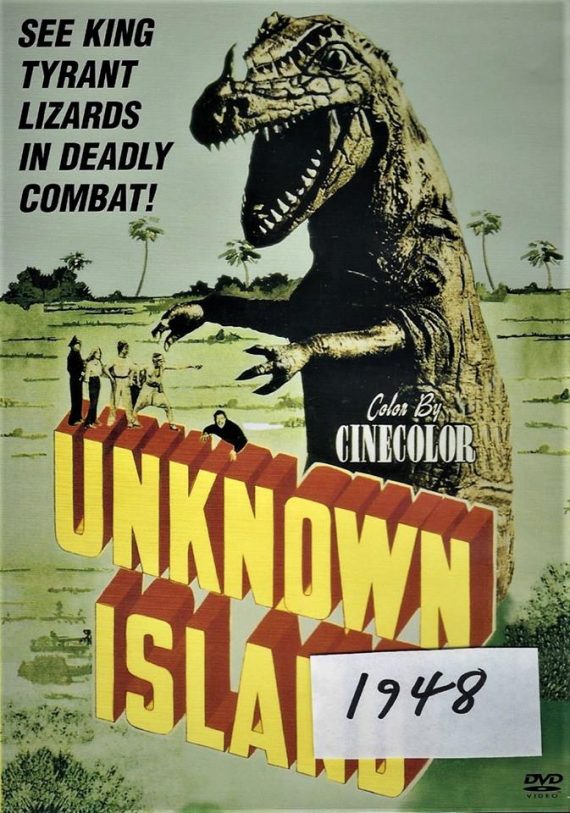 When I say “Film Library,” I don’t mean paying money to download an electronic file. I’m a twentieth century sort of guy and loathe such, viewing them as ephemeral at best. I prefer a physical collection of Blu-rays and DVDs which belong to me and can be watched as long as the technology to play them exists, which, at my age (67) should be good for the rest of my life.
When I say “Film Library,” I don’t mean paying money to download an electronic file. I’m a twentieth century sort of guy and loathe such, viewing them as ephemeral at best. I prefer a physical collection of Blu-rays and DVDs which belong to me and can be watched as long as the technology to play them exists, which, at my age (67) should be good for the rest of my life.
Why bother, you ask? I remember when the first video store opened in Vancouver, B.C., circa 1984 or thereabouts. I must have been one of the first customers bouncing through the door. As I recall, you could rent a player for $100, and videos rented for $50 each. (Needless to say, prices soon came down.) I saw they had “King Kong” (1933). “How much to buy a copy?” I asked breathlessly.
“Buy a film? Are you crazy? Who would want to buy a film? Once you’ve seen it once it’s no good. Waste of money. Nobody is ever going to buy a film. Don’t be an idiot. We only rent.” (This video store, the first to open in town, was the first to go out of business.) Of course I wanted to own a copy of “King Kong.” It is well worth viewing multiple times, each time noting new details. (Remember when the cover of Famous Monsters of Filmland #20 (Nov 1962) featured the line “Read About The Man Who Saw King Kong 90 Times!” which referred to Ray Harryhausen?) Now that I am growing old and forgetful, every viewing is much improved since it is increasingly like watching it for the first time.
In my humble collector’s opinion, you don’t actually own a film unless it is sitting on your shelf. My collection of 445 Science Fiction and Horror movies is woefully inadequate, but it’s a start. My retirement income even more inadequate, since it allows me to purchase new films at an average rate of just one a month at best. So, I tend to choose carefully. My collection used to be half again as large due to the abundance of videos I owned, but they took up a lot of space and had to be given away when I recently moved to a smaller apartment.
Alas, chances that I will ever again own a copy of “Octaman” (1971) or “Nude on the Moon” (1961) are slim. These films are not without interest, especially if you are a completist, but are essentially mediocre and somewhat boring, lacking the vital energy to be found in the very best and the very worst of films. I can’t afford mediocre anymore.
And boy, was I a completist. For many years it was my ambition to see every genre film ever made. Even if I was bored to tears I would watch each film through to the very end. I was the victim of a kind of mania, I think.
So now the question becomes, how do you know what films are out there worth collecting? Nowadays there is a multitude of online sources, but you pretty much have to already know the title to look up a particular film. Seems to me many a gem can fall through the cracks and remain in obscurity. In comparison, my generation had it easy, in terms of tracking down everything they needed to know.
First there was “Shock Theatre,” with the entire package of Universal Horror films being shown on TV for the first time. Tremendously thrilling to a pre-teen kid like myself. Then came the advent of Ackerman’s “Famous Monsters of Filmland” with its full-page and half-page photos of films not yet available on TV which I lusted to see. Next, finally, my parents allowed me to go to theatres by myself, haunting a theatre devoted to second and third-run films, plus attending first-run genre films as soon as they came out.
The first book devoted to the genre I am aware of was Carlos Clarens’ “An Illustrated History of the Horror Film” which was published in 1967. My first edition copy cost me half my coin collection. Then the first issue of “Cinefantastique” Magazine came out in 1970. At last! A “serious” magazine devoted to genre films! Later on “Filmfax” Magazine also explored the making of obscure films to an amazing degree. Alas, these magazines are no longer published, on paper at least.
The advent of videos in the 1980s unleashed a torrent of films for home viewing, and out came Michael Weldon’s “Psychotronic Encyclopedia of Film” (1983), Phil Hardy’s “Science Fiction Complete Film Sourcebook” (1984) as a Christmas present from my Mom , Hardy’s “Encyclopedia of Horror Movies” (1986), and ultimately, Bill Warren’s “Keep Watching The Skies! – American Science Fiction Movies Of The Fifties” (2010) for the magnificent single-volume final edition, the first edition two-volume set being published in 1983 and 1986. The 1980s were a wonderful time for collectors such as myself.
I had to give away all my “Filmfax” magazines and most of my “Cinefantastiques,” but I retain all the above mentioned books which constitute a fantastic reference library. I’ve seen most of the films they describe—still a number on my bucket list, like “Vampyr” (1931), and “The Last Woman on Earth” (1960)—and am pleased to say I own a fair number of the best and the worst of them.
What about films from the 1990s onwards? This is the era when genre films went mainstream in terms of public appeal. There are simply too many to keep track of. I have seen no books that are anything like as comprehensive for this period as the books I possess on earlier films. Consequently, I have given up being a completist. I don’t even bother checking websites for upcoming films. My collecting interests are still centred in the distant past.
However, if a modern film gets reasonably good reviews and sounds entertaining, or at least interesting, I won’t bother going to the theatre—I used to love the movie theatre experience. Not any more. Too much trouble—but will buy the film instead, desperately hoping I won’t be disappointed. Usually I wait a year or so for the price to drop drastically. In this manner I picked up “Bladerunner 2049” (2017) and “Kong: Skull Island” (2017). Neither film is perfect, and I won’t watch them as often as I watch the originals, but I enjoy them.
So, what are my recommendations for the collection that you, as a newly hatched film buff, need to acquire? I sincerely doubt you will see as many of the classics (both good and bad) as I have. Most people don’t seem to have the time these days. Still, I should mention some of the essentials from each decade, and one or two more idiosyncratic choices which happen to appeal to me. I’ll stick with the films in my collection, even though there are many I have seen but do not currently own—such as “Teenage Cave Man” (1958) and “Invasion of the Saucer Men” (1957)—which merit ownership, in my opinion.
THE SILENT ERA

The obvious choices include “The Cabinet of Dr. Caligari” (1920), “Nosferatu” (1922), “Phantom of the Opera” (1925), and “The Lost World” (1925), to name some of the most prominent classics. Many are available in remastered versions that are a treat to view.
There’s “Metropolis” (1926) of course, now restored to a version more complete than the one Forrest J Ackerman saw when first released in the States. I, too, love it, but to the horror of purists everywhere, prefer Mororder’s version with the modern rock music score. The songs chosen for each major scene are appropriate and apt, and really bring the film alive in terms of pure energy. I think it’s great.
Another film worth having is Fritz Lang’s “Woman in the Moon” (1929). Sure, it’s slow to start, but the lunar scenes are very atmospheric (pun intended) and it has a charm all its own. Not at all a bad early attempt to convey the reality of landing on the Moon.
For Karloff fans, I recommend “The Bells” (1926) wherein he plays a Caligari-like mesmerist albeit not a villain and definitely a minor character, yet quite an interesting performance offering promise of much to come in his career.
THE 1930S

The Universal Horror films of course, starting with “Frankenstein” (1931), “Dracula” (1931), “The Mummy” (1932), and all their sequels. Of particular note are films like “Murders in the Rue Morgue” (1932), “The Black Cat” (1934), “The Raven” (1935), “The Invisible Ray” (1936, and “The Wizard of Oz” (1939). And, naturally, the 8th wonder of the world, “King Kong” (1933).
Filmed at night on the same sets but with a different cast is the Spanish language version of “Dracula” (1931). Many critics consider this version a superior film, less stage-bound, and better directed. I’m not certain I agree 100%. Bela Lugosi’s interpretation of Dracula, however, is definitely the better of the two.
“Just Imagine” (1930) was based on a hugely successful Broadway hit, but falls flat as a comedy / satire glimpse of the future. It flopped at the box office, failing to earn back the huge amount of money spent on it. Allegedly it killed off the idea of big budget SF “A” pictures till the runaway success of “Star Wars” (1977). Regardless, “Just Imagine” is an interesting glimpse into 1930 views on feminism and anti-Semitism, among other topics of the day. Definite period piece.
“Maniac” (1934) is a distinctly odd film involving an insane vaudeville performer impersonating a mad scientist dedicated to raising the dead. Featuring hardly any gore but full of unpleasant ideas, this is an early example of a shockploitation film, originally shown only in burlesque houses. Loosely based on Poe’s “The Black Cat.”
THE 1940S

My collection for this decade is rather sparse. Of what I do possess, “The Wolfman” (1941) stands out, followed by “Ghost of Frankenstein” (1942) which is the second time Bela Lugosi plays “Ygor”, and “Son of Dracula” (1943) with Long Chaney Jr. as Count Alucard.
A personal favourite is “Abbot and Costello Meet Frankenstein” (1948) which is their best film and features excellent performances by Bela Lugosi and Lon Chaney Jr., not to mention Glenn Strange as a perfectly adequate Frankenstein monster, though not in comparison with Karloff. Nevertheless, a fitting high-note end to the Universal Frankenstein series. Good writing. Good slapstick. Genuinely funny. First class all the way.
“Unknown Island” (1948) is notorious as the film with stuntmen on the verge of heat stroke lumbering about in silly man-in-a-suit dinosaur costumes. The film includes a scene where one of the dinosaurs falls over. The poor guy inside had actually passed out. What makes the film interesting for me, apart from the fact the film was shot in colour, is that the character of Captain Tarnowski, played by Barton MacLane, is an absolute louse straight out of film noir. He makes the film.
THE 1950S

This is THE decade for science fiction films. Absolute “must haves” include “Destination Moon” (1950), “The Day the Earth Stood Still” (1951), “The Thing” (1951), “The War of the Worlds” (1953), “Them” (1954), “This Island Earth” (1955), “Forbidden Planet” (1956), “20 Million Miles to Earth” (1957), “Curse of the Demon” (1958), and “Plan 9 from Outer Space” (1959).
Personal favourites in terms of sheer entertainment value include “Rocketship XM” (1951) a rip-off of “Destination Moon” but better in some ways (I love the Martian ruins!),“My Son the Vampire” (1952) with Bela Lugosi, Harryhausen’s “The Beast from 20,000 Fathoms” (1953), “It, the Terror from Beyond Space” (1958), “The Creeping Unknown / Quatermass Experiment” (1955), “Enemy From Space / Quatermass 2” (1957), and “Teenagers From Outer Space” (1959).
“Attack of the Crab Monsters” (1956) is a Roger Corman film which has always appealed to me. There’s something about giant, people-eating, telepathic crabs I find irresistible. Corman claims he designed the film to have a shock effect or at least an audience-unsettling event in every scene. At any rate it was his most commercially successful film of the 1950s. I quite enjoy it, absurd as the premise is.
“The Giant Claw” (1957) is about an enormous, alien, supersonic bird—sort of an American version of “Rodan” (1956)—which was acted absolutely straight by the cast who were told the special effects would be fantastic. That’s one way of putting it. A marionette version of “Beaky Buzzard” is more like it. One memorable scene features the monster roosting on an egg very nearly as large as the creature itself. As one critic put it, “One regrets the lack of an egg-laying sequence.” This film, despite a decent script and decent acting, is jaw-droppingly idiotic. Highly recommended.
THE 1960S

Some really good films this decade: “First Spaceship on Venus” (1960), “The Time Machine” (1960), “Matango” (1963) about castaways turning into mushroom people, “Jason and the Argonauts” (1963), “First Men in the Moon” (1964), “One Million Years B.C.” (1966), “Planet of the Apes” (1968), and “2001, a Space Odyssey” (1968).
For me, one of the best and eeriest of the lot is Mario Bava’s “Planet of the Vampires” (1965). That it has a stupid, cliché ending doesn’t matter. Amazing design work, astounding colour lighting (so typical of Bava), and a riveting scene where astronauts discover a giant alien skeleton aboard a derelict space ship. That this and the alien landscape had some influence on the movie “Alien” (1979) is something I take for granted. “Planet of the Vampires” is a menacing, surreal film which really stirred my sense of wonder when I first saw it. A “must see” film!
This decade also produced entertainingly bad films such as “The Beast of Yucca Flats” (1961) starring Tor Johnson, “Creation of the Humanoids” (1962) which was Andy Warhol’s favourite film, “The Creeping Terror” (1964) about an ambulatory alien carpet creature, “Santa Claus Conquers the Martians” (1964), and “Queen of Blood” (1966) involving alien vampires.
THE 1970S

Some important and significant films here: “Thx 1138” (1970), “The Abominable Dr. Phibes” (1971), “The Omega Man” (1971), “The Rocky Horror Picture Show” (1975), Close Encounters of the Third Kind (1977), “Star Wars” (1977, and “Alien” (1979).
Not quite as good but fun to watch: “Colossus, the Forbin Project” (1970), “Gargoyles” (1972), “Horror Express” (1972), “Raw Meat” (1973), and “Death Race 2000” (1975).
A few bad films with entertaining moments are “Beware! The Blob” (1972), “Shock Waves” (1976) featuring underwater Nazi zombies, and “The Black Hole” (1979) which I consider an insultingly bad film despite beautiful special effects, as it is poorly written, a hodgepodge of Disney clichés, and very disappointing. “The Black Hole” is worth watching as a splendid example of a rare type of Disney film, a dismal failure.
Running out of room, so I think I’ll stop here.
What about all the good films I haven’t mentioned? And the wonderfully bad films I’ve left out? Lack of space for one thing. May not own copies for another. And mainly, all of the above are the personal choices I deem worthy of bringing to your attention.
Happy collecting!











Bill Warren’s book is amazing. Tons of detail about every movie I’d ever heard of.
“Nude on the Moon” is in the public domain, and available for free download from https://archive.org/details/Nude.on.the.Moon.1961.AVI1Gb (which valuable site just happens to be fundraising, with a donor challenge: “Your generous donation will be matched 2-to-1 right now”).
One can also borrow DVDs from the local public library, including (around here) bringing titles in from other branches.
“Running out of room”? Dude, this is electronics, not paper. You can post as many films as you want! (I doubt Steve Davidson would be bothered by a longer column.)
Well written. I, myself, have cut down my film collection (which isn’t all genre movies, but most); dropped many of my DVDs in favour of Blu-Rays. When our local video store closed permanently, I bought as many 3D Blu-Rays as I could (although *someone* local, I don’t know who, beat me to a bunch), ending with something like 52 of them. I can’t afford Brick & Mortar store prices for 3D Blu-Rays, which range from $30-$60 (and sometimes more).
I was in hog heaven when I could finally–after waiting half a century–get my own 3D TV for an affordable price (with the trade-in from my plasma, I paid about $200 total)!
Good column, Graeme!